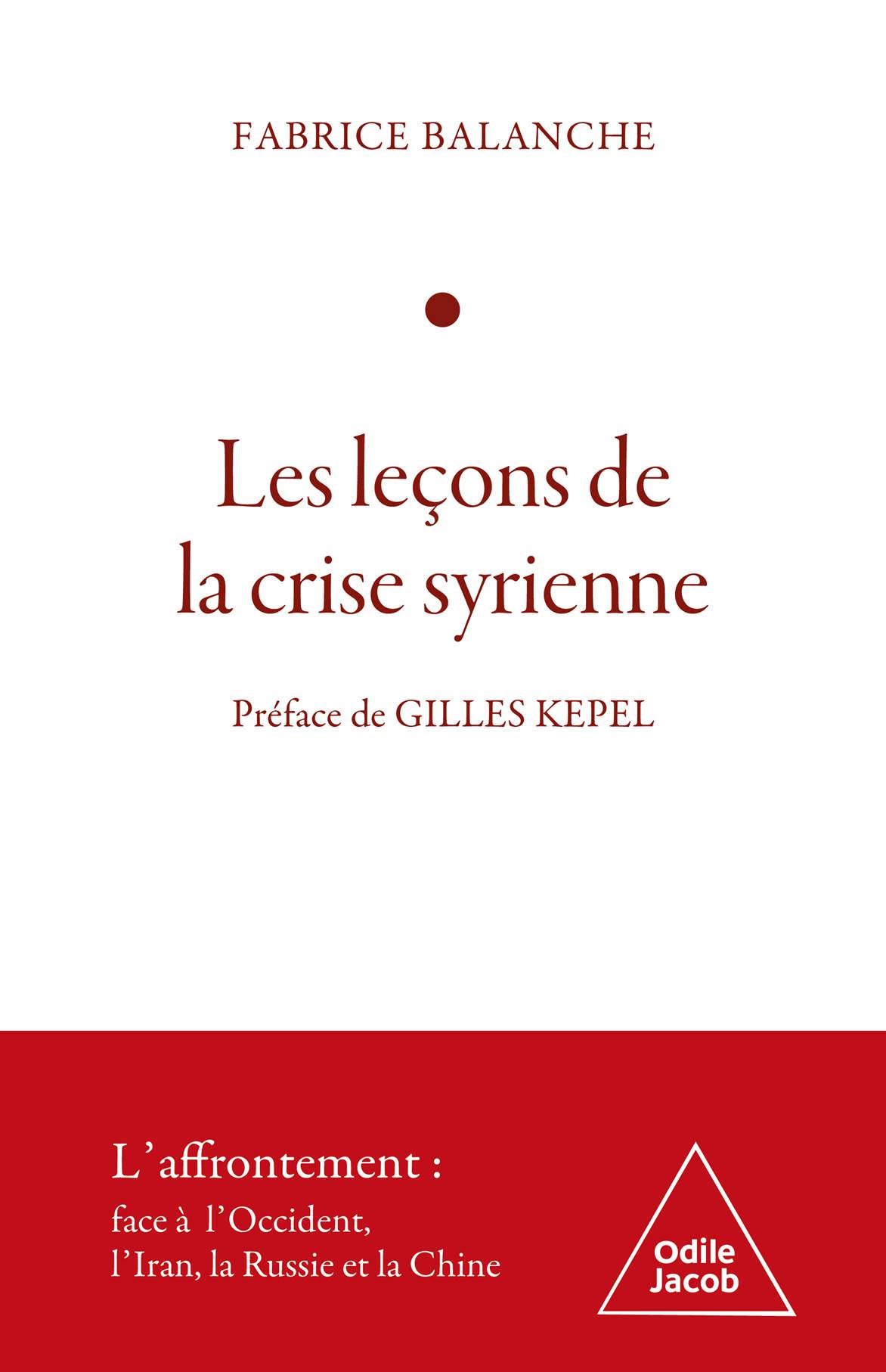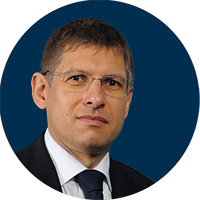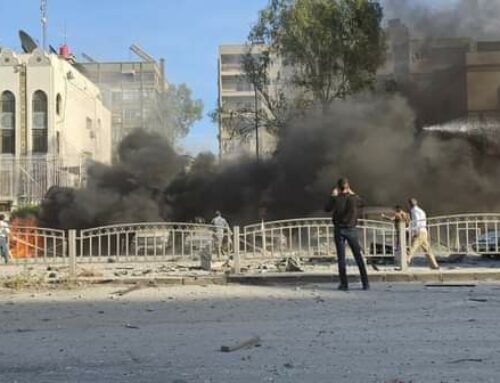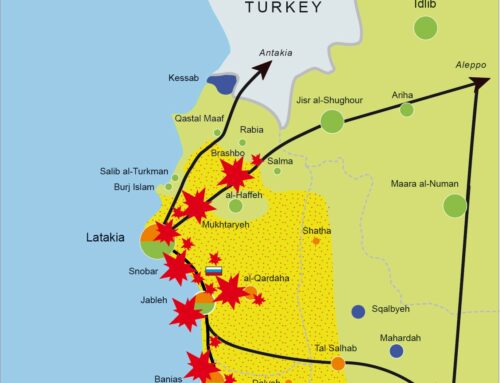Original article from Le Figaro written by Charles Jaigu
CHRONICLE – Geographer Fabrice Balanche offers a powerful analysis of the Syrian war. This excellent teacher of a confusing reality dismantles once and for all the faults of neoconservatism, including in its French version.
It’s the story of a young geography student who is doing his thesis in Besançon on the evolution of agricultural practices on the Syrian coast in the 1990s. He continued his studies, prepared his thesis, learned Arabic, and immersed himself in the local society of Latakia. He gradually discovers a country in danger of civil war between ethnic-religious communities with unbridled birth rates. “ The total population has doubled every twenty years since 1946 (from 3.5 million to 21 million in 2011, Editor’s note), and the Syrian governments of Hafez el-Assad or his son Bashar never wanted to limit the birth rate “, he told us during our conversation in Paris – he now teaches at Lyon 2 University.
Two hundred inhabitants per square kilometre is too many. The management of water reserves is catastrophic, against a backdrop of repeated droughts between 2005 and 2010. “ Long before the civil war, Syria was on the brink of the precipice “, he noted at the time. It is useful to make the link here, as Balanche suggests, with Rwanda, also dangerously overpopulated before the genocide. In either case, the struggle for power between one group and another will result in genocide here, war there and, above all, forced exile.
Unfortunately in Paris no one listens to this Cassandra. The winds of the Arab Spring are reaching Syria, which we thought was under control. And very quickly, the violence of the repression by Assad’s troops outraged Westerners. The story of the exiles is impressive. We allow ourselves to be convinced that a democratic Syria is possible. The neoconservative belief is reborn from its ashes. However, since 2012, Daesh warriors are replacing the supporters of democracy.
In France, we believed in it
We prefer to attribute the cause to the skill of Assad, who, it is true, freed numerous jihadists to sow discord in the Syrian liberation army. “ The media and experts are fooled by the appearance of a pro-democracy movement “, Balanche tells us, which exempts Le Figaro from this error of judgment. A diplomat from the Quai d’Orsay told him peremptorily: “ Bashar released the Islamists who were in his prisons, and he used them to sow discord in the democratic insurrection. If we fire Bashar, we will be rid of the Islamists. » On paper, perhaps. But in the eyes of a field geographer like Balanche, this is a beginner’s mistake. The secular middle class is a mirage, mixed weeding only concern a tiny urban elite, and rampant fundamentalism is spreading within the ranks of the Sunni community, if we leave aside the bourgeoisie who work with the regime. Free elections? It is bringing Islamist to power and prolonging the chaos.
Arguably, it was difficult to discern the right line in this sound and fury, especially when Qatar and Saudi Arabia are pouring their dollars into the anti-Assad “resistance.” However, from the beginning, Balanche warns against the temptation to force the fall of the master of Damascus. Whoever risks it will only succeed if he dares an operation as costly as that of the Americans in Iraq ten years earlier. But no one wants to relive this nightmare. In conclusion: “Westerners encouraged the revolt without giving it the means to succeed. » It was therefore necessary to let Assad restore order, and above all not to give him the opportunity too good for him to evacuate his entire unwanted population to neighboring countries and Europe. This forecast stated in 2012 by Balanche led to him being accused of supporting the Syrian regime, which of course is not the case. But the author looks at geography and politics as it is and not as we would like it to be.
He notes that the West and their allies (Qatar, Turkey, Saudi Arabia) underestimated the determination of the Iranians to support their ally in the region. But, above all, they neglected Moscow’s determination. However, Vladimir Putin had been clear. After the fall of Gaddafi, he would not allow a new “ change of diet » like in Serbia, Iraq or Libya. No one predicted that Russian planes would take over the Syrian skies. New error. A new Eurasian axis is boldly asserting itself in the Middle East. Tehran-Moscow in the foreground, Beijing in the back seat. It is a bitter failure.
And yet, in France, we believed in it. Laurent Fabius, in particular, has transformed himself into an anti-Bachar activist. François Hollande’s Minister of Foreign Affairs shows himself to be sure of himself on several occasions: “ The Syrian regime only has a few days left “, he said in July 2012. He will respond that Barack Obama did not do what he had promised, namely to bomb chemical weapons warehouses. Fabius could have simply listened to the warnings. Gilles Kepel, who wrote the preface to the book, recalls how late the awareness was. It took the attacks of January and November 2015 to unravel the Élysée and the Quai d’Orsay. “ We have to blame the incompetence of the leaders and the experts advising them, who imagined, for lack of knowledge of the field, that Syria constituted “our war in Spain”, a daydream drowned in the blood of the Syrians and the French », accuses Kepel in the laudatory preface which opens this book. Indeed, French jihadists were returning from Raqqa, headquarters of Daesh, where they had trained, to kill in France. They were part of some 1,300 jihadists – and not just 300, as was underestimated at the time – who left to fight for Daesh or al-Nusra – the Syrian branch of al-Qaïda that France too late identified as such and to which it even gave weapons.
We need to shorten our remarks. This book will be a landmark. It is easy to say after the fact what should have been done. But when we said it before, and we explain it afterwards, we must salute the clarity and rigor of the analysis. The author said that the regime “ would emerge strengthened » by this war, and that it would cause the departure of at least 5 million people – ultimately there were 8 million. “ We were wrong, and now what do we do? ? “, one diplomat told him in November 2015, when it became impossible to deny the evidence. “ It was very late. This civil war was an opportunity to achieve a rebalancing of the population to the detriment of the Sunnis. It was a priority of the regime and of Iran. » Europe paid the price by welcoming a large part of them. The road to Damascus definitely has the taste of lost illusions. Lawrence of Arabia experienced this in 1919. His adventure ended miserably in Damascus. A century later, nothing has changed.
Fabrice Balanche, Lessons from the Syrian crisis (in French) , Odile Jacob, 352 p., €24.90.

Les leçons de la crise syrienne Fabrice Balanche






